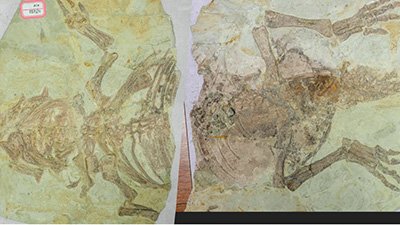An Orangutan Herbalist?
In June of 2022, a wild male orangutan named Rakus in Indonesia was observed with an open wound on his face from a fight with another male. Then, surprisingly, he was observed applying a “poultice”—basically, chewed leaves and sap from a “very potent healing plant”—to the wound, which soon healed. Researchers claim this is the first example of a wild animal “self-medicating with a plant with known therapeutic properties.”
The plant Rakus chewed and applied was akar kuning, a plant found across the orangutan habitat. It’s known for providing pain relief and inflammation reduction and is also antimicrobial and antifungal. Of course, it’s “hard to say,” the researchers admit, whether Rakus knew this plant would help or just happened to grab it and use it on his wound. They also don’t know if he learned this behavior from another orangutan or stumbled across it on his own.
We must understand the difference between observational science and historical science.
Now, does this great ape applying chewed leaves to his face tell us anything about our supposed evolutionary past? According to another article, the researchers reportedly think so, believing that “great apes’ ability to identify medicines and treat wounds could trace back to a shared ancestor with humans.” But here’s where we must understand the difference between observational science and historical science.
What we observe in the present is an orangutan applying masticated leaves to his injured face (and the researchers do note that many other animals self-medicate to varying degrees). What we don’t observe is a supposed apelike creature doing the same and somehow passing that knowledge or instinct down through evolution to more humanlike ancestors.
No evolution has been observed. The idea that such an ability “could trace back to a shared ancestor with humans” is an interpretation of the evidence in the present based on an evolutionary worldview that humans and apes are closely related. Therefore, they interpret what the ape is doing based on how humans think.
When we start with God’s Word, we know that God created the great ape kind and humans—with no apelike creatures or evolution needed!
While this study is interesting and tells us something new about orangutans, it tells us nothing about our supposed evolutionary past. Rather, when we start with God’s Word, we know that God created the great ape kind (to which orangutans belong) and humans—with no apelike creatures or evolution needed!
Get More Answers on Answers News
This item was discussed Monday on Answers News with cohosts Dr. Gabriela Haynes, Dr. Georgia Purdom, and Kevin Hadsall. Answers News is our weekly news program filmed live before a studio audience here at the Creation Museum, broadcast on our Answers in Genesis YouTube channel, and posted to Answers TV. We also covered the following topics:
- Boy Scouts become Scouting America.
- Why do most mammals have five fingers?
- And more!
Be sure to join us each Monday at 2 p.m. (ET) on YouTube or later that day on Answers TV for Answers News. You won’t want to miss this unique news program that gives science and culture news from a distinctly biblical and Christian perspective.
Thanks for stopping by and thanks for praying,
Ken
This item was written with the assistance of AiG’s research team.
Most Recent News
-
May 30, 2024 from Ken Ham Blog
In an interview on what George Barna sees as the biggest threats to our churches, he said “We’ve reached a time of Christian invisibility.” What does that mean?
-
May 29, 2024 from Ken Ham Blog
Has a new study on Psittacosaurus really proven that so-called feathered dinosaurs had both reptile and birdlike skin?

Answers in Genesis is an apologetics ministry, dedicated to helping Christians defend their faith and proclaim the good news of Jesus Christ.
- Customer Service 800.778.3390
- © 2024 Answers in Genesis




